by Catherine Cusick
As more publications pursue blockbuster stories with film and television potential, producers in Hollywood and the magazine industry are taking their inspiration from successful article-to-film adaptations of the past that have achieved box office success.
Here are 25 gold-standard film adaptations of magazine articles, published over the course of half a century as cover stories, features, or breaking news, as well as direct links to read all 25 stories online.
Legacy magazines with well-known print editions dominate this list, as do the nonfiction writers that legacy magazines accept and champion. Many of these writers’ names will be familiar to readers, as will the majority of the magazines and films themselves, in many cases because celebrated journalists inspired these major motion pictures at the peak of their careers as writers and reporters. Name recognition in one industry reinforces name recognition in another, and — despite the incredible diversity of feature-length nonfiction being published today by new voices most mainstream audiences have yet to discover — institutional support still tends to elevate known veterans.
While the talents of all of the writers on this list are undeniable, there are also well-documented structural biases that account for why so many of the writers represented here are overwhelmingly male, white, or Susan Orlean. These stories belong on any narrative nonfiction syllabus on their own merit, but I hope these samples are still just the beginning, and that new filmmakers and magazine writers can start to work together far more often on a greater breadth of material, with sufficient editorial guidance and studio backing to support them.
This list is by no means exhaustive. I’ve limited this roundup to favor adaptations (loosely defined) based primarily on magazine-style features, including only a couple of films based on award-winning newspaper investigations. The list of new film and television adaptations based on popular books or podcasts, let alone reporting that has helped support the explosion in streaming documentary formats, would run even longer.
It takes time, access, imagination, and resources to be able to realize ambitious true stories like these in their original form as narrative magazine features. It would be a welcome change to see greater diversity in the production pipeline in the coming years: in the subjects of narrative stories, in the publications considered for exclusive source material, in the creative teams that are given studio support, in the agencies brokering deals, in the awards and recognition that elevate new work, and in the storytellers who are given the resources to write long.
Writers are the lifeblood of all of these industries, and will always play a pivotal role in any production that is based on a true story.
A Beautiful Day in the Neighborhood (2019)
Based on Can You Say…Hero? by Tom Junod (Esquire, 1998)
Once upon a time, a man named Fred Rogers decided that he wanted to live in heaven. Heaven is the place where good people go when they die, but this man, Fred Rogers, didn’t want to go to heaven; he wanted to live in heaven, here, now, in this world, and so one day, when he was talking about all the people he had loved in this life, he looked at me and said, “The connections we make in the course of a life—maybe that’s what heaven is, Tom. We make so many connections here on earth. Look at us—I’ve just met you, but I’m investing in who you are and who you will be, and I can’t help it.”
Hustlers (2019)
Based on The Hustlers at Scores by Jessica Pressler (The Cut, 2015)
While evolutionary theory and The Bachelor would suggest that a room full of women hoping to attract the attention of a few men would be cutthroat-competitive, it’s actually better for strippers to work together, because while most men might be able keep their wits, and their wallets, around one scantily clad, sweet-smelling sylph, they tend to lose their grip around three or four. Which is why at Hustler, as elsewhere, the dancers worked in groups.
Beautiful Boy (2018)
Based on My Addicted Son by David Sheff (The New York Times Magazine, 2005)
Nick now claims that he was searching for methamphetamine for his entire life, and when he tried it for the first time, as he says, “That was that.” It would have been no easier to see him strung out on heroin or cocaine, but as every parent of a methamphetamine addict comes to learn, this drug has a unique, horrific quality. In an interview, Stephan Jenkins, the singer in the band Third Eye Blind, said that methamphetamine makes you feel “bright and shiny.” It also makes you paranoid, incoherent and both destructive and pathetically and relentlessly self-destructive. Then you will do unconscionable things in order to feel bright and shiny again. Nick had always been a sensitive, sagacious, joyful and exceptionally bright child, but on meth he became unrecognizable.
Spotlight (2015)
Based on a series of reports, starting with Church Allowed Abuse by Priest for Years, by the Boston Globe Spotlight Team (Boston Globe, 2002)
For decades, within the US Catholic Church, sexual misbehavior by priests was shrouded in secrecy — at every level. Abusive priests — Geoghan among them — often instructed traumatized youngsters to say nothing about what had been done to them. Parents who learned of the abuse, often wracked by shame, guilt, and denial, tried to forget what the church had done. The few who complained were invariably urged to keep silent. And pastors and bishops, meanwhile, viewed the abuse as a sin for which priests could repent rather than as a compulsion they might be unable to control.
A scene from Spotlight / Open Road Films
Kill the Messenger (2014)
Based on the Dark Alliance series by Gary Webb (San Jose Mercury News, 1996)
Blandon’s lawyer, Brunon, said in an interview that his client never told him directly that he was selling cocaine for the CIA, but the prominent Los Angeles defense attorney drew his own conclusions from the “atmosphere of CIA and clandestine activities” that surrounded Blandon and his Nicaraguan friends.
“Was he involved with the CIA? Probably. Was he involved with drugs? Most definitely,” Brunon said. “Were those two things involved with each other? They’ve never said that, obviously. They’ve never admitted that. But I don’t know where these guys get these big aircraft…”
The Bling Ring (2013)
Based on The Suspects Wore Louboutins by Nancy Jo Sales (Vanity Fair, 2010)
He says he doesn’t remember exactly why he and Lee decided to start burglarizing celebrities’ homes, except that “these were women with, like, fashion sense. Rachel watched The Hills, Gossip Girl—all those shows. She loved their clothes.” They started “checking up on celebrity Web sites. We’d be like a little research team.” They’d drive by celebrities’ homes to do surveillance, figuring out how to get in.
They picked Paris Hilton as their first victim, Prugo said, because they figured she was “dumb.” “Like, who would leave a door unlocked? Who would leave a lot of money lying around?”
Argo (2012)
Based on How the CIA Used a Fake Sci-Fi Flick to Rescue Americans From Tehran by Joshuah Bearman (WIRED, 2007)
For about a week, no one in Washington or Ottawa could invent a reason for anyone to be in Tehran. Then Mendez hit upon an unusual but strangely credible plan: He’d become Kevin Costa Harkins, an Irish film producer leading his preproduction crew through Iran to do some location scouting for a big-budget Hollywood epic. Mendez had contacts in Hollywood from past collaborations. (After all, they were in the same business of creating false realities.) And it wouldn’t be surprising, Mendez thought, that a handful of eccentrics from Tinseltown might be oblivious to the political situation in revolutionary Iran. The Iranian government, incredibly, was trying to encourage international business in the country. They needed the hard currency, and a film production could mean millions of US dollars.
Tower (2012)
Based on 96 Minutes by Pamela Colloff (Texas Monthly, 2006)
Whitman rode the elevator to the twenty-seventh floor, dragged his footlocker up the stairs to the observation deck, and introduced the nation to the idea of mass murder in a public space. Before 9/11, before Columbine, before the Oklahoma City bombing, before “going postal” was a turn of phrase, the 25-year-old ushered in the notion that any group of people, anywhere—even walking around a university campus on a summer day—could be killed at random by a stranger. The crime scene spanned the length of five city blocks, from Twentieth to Twenty-fifth streets, bounded by Guadalupe (“the Drag”) to the west and Speedway to the east, and covered the nerve center of what was then a relatively small, quiet college town. Hundreds of students, professors, tourists, and store clerks witnessed the 96-minute killing spree as they crouched behind trees, hid under desks, took cover in stairwells, or, if they had been hit, played dead.
Into the Wild (2007)
Based on Death of an Innocent by Jon Krakauer (Outside, 1993)
In early May Westerberg received a postcard of a polar bear, postmarked April 27. “Greetings from Fairbanks!” it read.
This is the last you shall hear from me Wayne. Arrived here 2 days ago. It was very difficult to catch rides in the Yukon Territory. But I finally got here. Please return all mail I receive to the sender.
It might be a very long time before I return South. If this adventure proves fatal and you don’t ever hear from me again, I want you to know your a great man. I now walk into the wild.
McCandless’s last postcard to Westerberg fueled widespread speculation, after his adventure did prove fatal, that he’d intended suicide from the start, that when he walked into the bush alone he had no intention of ever walking out again. But I for one am not so sure.
Radio (2003)
Based on Someone to Lean On by Gary Smith (Sports Illustrated, 1996)
One day the players hear noises and look over. The boy on the margin is commanding his own team, one that only he can see, through a series of calisthenics and drills, doing his best to mimic the coaches’ body language, signals and commands. The players giggle; it’s a distraction, to be sure. The young coach, whose future hinges on his ability to maintain discipline and precision on that grid, turns and looks too.
The choices that make or unmake a life are so small. “Come over here, boy,” calls the coach.
When we speak of the power of sports today, it’s always in terms of their grip on the national marketplace, their headlock on the American psyche. It’s so easy to forget all about their other power. . . .
Shattered Glass (2003)
Based on Shattered Glass by Buzz Bissinger (Vanity Fair, 1998)
For those two and a half years, the Stephen Glass show played to a captivated audience; then the curtain abruptly fell. He got away with his mind games because of the remarkable industry he applied to the production of the false backup materials which he methodically used to deceive legions of editors and fact checkers. Glass created fake letterheads, memos, faxes, and phone numbers; he presented fake handwritten notes, fake typed notes from imaginary events written with intentional misspellings, fake diagrams of who sat where at meetings that never transpired, fake voice mails from fake sources. He even inserted fake mistakes into his fake stories so fact checkers would catch them and feel as if they were doing their jobs. He wasn’t, obviously, too lazy to report. He apparently wanted to present something better, more colorful and provocative, than mere truth offered.
City by the Sea (2002)
Based on Mark of a Murderer by Michael McAlary (Esquire, 1997)
We were standing in Vincent LaMarca’s kitchen. His first police-memo book, badge, and pair of handcuffs were in a little wood-framed box near the refrigerator. Vigorous, slightly balding, with a precise mustache, Vinnie is a measured man. When he spoke, I noticed later, he argued about fortune and bad luck with his hands out, palms up to the heavens. He believes in responsibility. Still. He believes in the death penalty. Still.
I showed him term in the dictionary that fit his family’s story. Vincent LaMarca told me that he later went back to study the word. It is atavism. Webster’s New Universal Unabridged Dictionary defines it this way: “In medicine, the recurrence in a descendant of any abnormality or disease of an ancestor.”
Blue Crush (2002)
Based on Life’s Swell by Susan Orlean (Women Outside, 1998)
At various cultural moments, surfing has appeared as the embodiment of everything cool and wild and free; this is one of those moments. To be a girl surfer is even cooler, wilder, and more modern than being a guy surfer: Surfing has always been such a male sport that for a man to do it doesn’t defy any received ideas; to be a girl surfer is to be all that surfing represents, plus the extra charge of being a girl in a tough guy’s domain. To be a surfer girl in a cool place like Hawaii is perhaps the apogee of all that is cool and wild and modern and sexy and defiant. The Hana girls, therefore, exist at that highest point—the point where being brave, tan, capable, and independent, and having a real reason to wear all those surf-inspired clothes that other girls wear for fashion, is what matters completely.
Adaptation (2002)
Based on Orchid Fever by Susan Orlean (The New Yorker, 1995)
Generally speaking, orchids seem to drive people crazy. The people who love orchids love them madly, but the passion for orchids is not necessarily a passion for beauty. Something about the form of an orchid makes it seem almost more like a creature than a flower. Many orchids are strange-looking, and others have bizarre shapes and jarring color combinations, and all orchids are rather ugly when they aren’t in flower. Laroche told me that many species are so plain that when he shows them to people they invariably ask him what they will look like when they bloom, and he has to explain that they already are blooming. Orchids have adapted to almost every environment on earth. They can be mutated, crossbred, and cloned. They can take the form of complex architectural structures or of garish, glamorous, luscious flowers. Not surprisingly, orchids have all sorts of sexual associations; few other flowers are as plainly erotic in appearance or effect. Even other creatures find orchids alluring. Some orchids are shaped exactly like the insect that pollinates them; the insect is drawn inside thinking it has found its mate.
Meryl Streep in a scene from Adaptation
Meryl Streep in a scene from Adaptation / Sony Pictures Releasing
The Fast and the Furious (2001)
Based on Racer X by Kenneth Li (Vibe, 1998)
“The excitement of going fast is like nothing else,” says Javier Ortega, a Columbian-American who screeches his blue Honda Civic to a halt in front of the store. “Another group gets excitement from doing drugs or whatever. Speed excites us.”
Few know that excitement like Estevez. Six feet tall with stooped shoulders and a healthy gut, he writes his own rules. Forget about valor, compassion, honor; in his book, that’s all synonymous with second place.
“People say I cheat all the time,” explains Estevez, a Huck Finn grin spreading across his face. “They say I jump the line, I do this, I do that. Drag racing is war. If you bring a knife, and I bring a machine gun, you’re dead. That’s it.”
Almost Famous (2000)
Based on The Allman Brothers Story and more by Cameron Crowe (Rolling Stone, 1973)
Stricken and grieving, the band returned to Macon from various vacation sites. There was no question in anyone’s mind: The band would carry on. They played at the funeral in Macon’s Memorial Chapel: a hollow, moving set; and joined hands with folks like Dr. John and Delaney Bramlett to sing “Will the Circle Be Unbroken.”
A month later, they made good on two scheduled Carnegie Hall dates, then threw themselves into feverish work completing the fourth album, Eat A Peach, released in early 1972. And success, like tragedy, dogged the band.
But the real question, as Gregg Allman puts it, is not why the Brothers are popular; it is how they managed to survive the loss of their driving force, the focus of their energy, the “father of the family.”
Coyote Ugly (2000)
Based on The Muse of the Coyote Ugly Saloon by Elizabeth Gilbert (GQ, 1997)
Truly, the Coyote Ugly Saloon is not for everyone. If you do not like a bar where all the songs on the jukebox are either by Hank Williams or about Hank Williams, then you will not like this bar. It is loud and dark and hidden down low in the East Village of New York City.
If you had come into the Coyote Ugly Saloon when I was bartending and asked me for a martini, I would have poured you a shot of Jack Daniel’s, and I would have said, “That’s how we make martinis in this place, pal.” If you had come into the Coyote Ugly Saloon when Caroline was bartending and asked her for a rusty nail, she might have climbed on top of the bar and poured the Jack Daniel’s down your throat for you.
Now if you had come into the Coyote Ugly Saloon when Lil was bartending and asked, say, for a glass of water, you would have really been in trouble. Lil would have turned off the jukebox immediately. Lil would have climbed on top of the bar and shouted to the crowd, “Do we drink water in this goddamn bar?” And the crowd would have booed and laughed. Then Lil would have poured some Jack Daniel’s down the throats of all your friends. Then Lil would have poured some Jack Daniel’s down her own throat, and then Lil would have charged you for buying her a drink.
The Insider (1999)
Based on The Man Who Knew Too Much by Marie Brenner (Vanity Fair, 1996)
It has become a dramatic convention to project onto whistle-blowers our need for heroism, when revenge and anger are often what drive them. There is a powerful temptation to see Jeffrey Wigand as a symbol: the little guy against the cartel, a good man caught in a vise. However, Wigand defies easy categorization. As a personality, he is prickly, isolated, and fragile—“peculiar as hell” in Mike Wallace’s phrase—but there seems to be little doubt about the quality of his scientific information. Wigand is the most sophisticated source who has ever come forward from the tobacco industry, a fact which has motivated B&W to mount a multi-million-dollar campaign to destroy him. National reporters arrive in Louisville daily with questions for Wigand: How lethal are tobacco additives such as coumarin? What did B&W officials know and when? And what does it feel like, Dr. Wigand, to lose your wife and children and have every aspect of your personal life up for grabs and interpretation in the middle of a smear?
Fear and Loathing in Las Vegas (1998)
Based on Fear and Loathing in Las Vegas: A Savage Journey to the Heart of the American Dream by Hunter S. Thompson (Rolling Stone, 1971)
“You’re going to need plenty of legal advice before this thing is over,” he said. “And my first advice is that you should rent a very fast car with no top and get the hell out of L.A. for at least 48 hours.” He shook his head sadly. “This blows my weekend, because naturally I’ll have to go with you – and we’ll have to arm ourselves.”
“Why not?” I said. “If a thing like this is worth doing at all, it’s worth doing right. We’ll need some decent equipment and plenty of cash on the line – if only for drugs and a super-sensitive tape recorder, for the sake of a permanent record.”
“What kind of a story is this?” he asked.
Boogie Nights (1997)
Based on The Devil and John Holmes by Mike Sager (Rolling Stone, 1989)
Now, in the breakfast nook, a tall, gaunt man with curly hair and a sparse beard pointed to the floor plan he had sketched.
“Here, this back bedroom, that’s Diles’s room,” he said. “He keeps a sawed-off shotgun under the blanket. . . . Here, this is Nash’s room. There’s a floor safe in the closet, right . . . over . . . here.”
“You sure about this, donkey dick?” asked Tracy McCourt, the gang’s wheelman.
“Hey, it’s cool,” said John Holmes, 36, the man with the plan. “I know Eddie. Nash loves me. He thinks I’m famous.”
John Holmes was famous, at least in some circles. What he was famous for was his penis.
In a career that would span twenty years, Holmes made 2274 hardcore pornographic films, had sex with 14,000 women. At the height of his popularity, he earned $3000 a day on films and almost as much turning tricks, servicing wealthy men and women on both coasts and in Europe.
Searching for Bobby Fischer (1993)
Based on Fathering a Chess Prodigy by Fred Waitzkin (The New York Times Magazine, 1985)
While I tried to slaughter him, I rooted for him to win. The game became a quicksand of passion for us. After an emotional loss, Josh would pretend not to care, but his bottom lip would tremble. Dejected, he’d go off to his room and my heart would be broken. My carefully crafted victories felt like defeats. The next day Josh would refuse to play me again, not even for a new toy car, not even for candy. I would feel panicky. Maybe during my last blistering attack, I’d killed off his baby dream of being the world champion. Or maybe it was my dream, not his. Such distinctions are ambiguous between a father and a little son. This is how fathers mess up their kids, I’d think. Would you throw a slider to a 6-year-old just learning to hit? Or smack him in the belly with a hard spiral? But a few days later, we would be at it again.
The Killing Fields (1984)
Based on The Death and Life of Dith Pran by Sydney H. Schanberg (New York Times Magazine, 1980)
I began the search for my friend Dith Pran in April 1975. Unable to protect him when the Khmer Rouge troops ordered Cambodians to evacuate their cities, I had watched him disappear into the interior of Cambodia, which was to become a death camp for millions. Dith Pran had saved my life the day of the occupation, and the shadow of my failure to keep him safe—to do what he had done for me—was to follow me for four and a half years.
Then, on October 3, 1979, Dith Pran crossed the border to Thailand and freedom. This is a story of war and friendship, of the anguish of a ruined country, and of one man’s will to live.
All the President’s Men (1976)
Based on GOP Security Aide Among Five Arrested in Bugging Affair by Bob Woodward and Carl Bernstein (The Washington Post, 1972)
Other sources close to the investigation said yesterday that there still was no explanation as to why the five suspects might have attempted to bug Democratic headquarters in the Watergate at 2600 Virginia Ave., NW, or if they were working for other individuals or organizations..
“We’re baffled at this point . . . the mystery deepens,” a high Democratic party source said.
Democratic National Committee Chairman Lawrence F. O’Brien said the “bugging incident . . . raised the ugliest questions about the integrity of the political process that I have encountered in a quarter century.
“No mere statement of innocence by Mr. Nixon’s campaign manager will dispel these questions.”
Dog Day Afternoon (1975)
Based on The Boys in the Bank by P.F. Kluge and Thomas Moore (LIFE Magazine, 1972)
“Freeze,” says the visitor, whose name is Sal Naturile. “This is a holdup. I’m not alone.”
Behind the tellers’ counter, Shirley Ball taps away at her adding machine, engrossed in the figures on the tape. It takes a commotion from across the room, the clear shout of an obscenity, to snap her attention. Who would use language like that in a bank? Shirley Ball looks up and sees her boss at his desk, a gun at his head, his hands in the air and a what-can-I-do? expression on his face. Now she spots the second robber, John Wojtowicz, a dark, thin fellow with the broken-faced good looks of an Al Pacino or a Dustin Hoffman, heading into the tellers’ area with an attaché case.
Wojtowicz begins filling the case with $37,951 in cash, $175,150 in traveler’s checks—not as much as he and his partner hoped for but enough of a modest winning to reverse two lifetimes of steady losing. Already halfway through the robbery, they can afford to be decent. They promise to lock the seven lady tellers, the guard and the bank manager in a vault and to call the cops after their getaway. Nobody is getting hurt.
In Cold Blood (1967)
Based on In Cold Blood: The Last to See Them Alive by Truman Capote (The New Yorker, 1965)
Until one morning in mid-November of 1959, few Americans—in fact, few Kansans—had ever heard of Holcomb. Like the waters of the river, like the motorists on the highway, and like the yellow trains streaking down the Santa Fe tracks, drama, in the shape of exceptional happenings, had never stopped there. The inhabitants of the village, numbering two hundred and seventy, were satisfied that this should be so, quite content to exist inside ordinary life—to work, to hunt, to watch television, to attend school socials, choir practice, meetings of the 4-H Club. But then, in the earliest hours of that morning in November, a Sunday morning, certain foreign sounds impinged on the normal Holcomb noises—on the keening hysteria of coyotes, the dry scrape of scuttling tumbleweed, the racing, receding wail of locomotive whistles. At the time, not a soul in sleeping Holcomb heard them—four shotgun blasts that, all told, ended six human lives. But afterward the townspeople, theretofore sufficiently unfearful of each other to seldom trouble to lock their doors, found fantasy re-creating them over and again—those sombre explosions that stimulated fires of mistrust, in the glare of which many old neighbors viewed each other strangely, and as strangers.
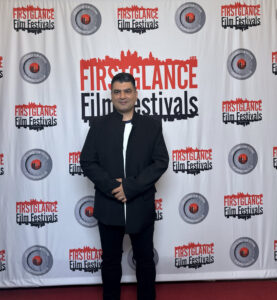
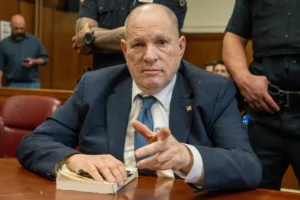
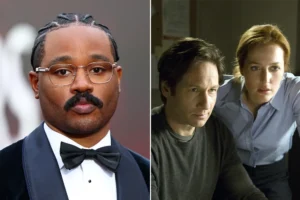





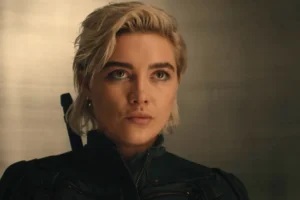


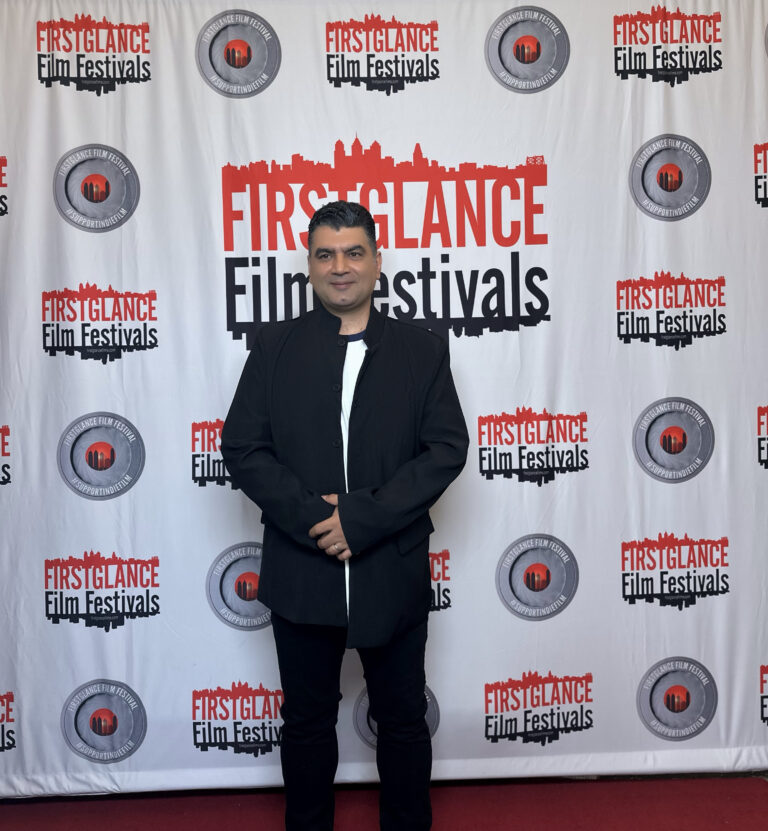


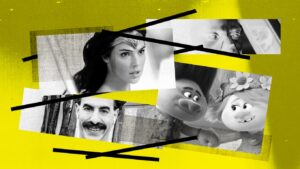

+ There are no comments
Add yours